Serlachius Manor Sculpture Park
04.07.2023
Acquaint yourself with the works in Manor’s Sculpture Park!
Serlachius Manor Park is unique. In accordance with the manor culture of the 1930s, Gösta Serlachius wanted an elegant garden. The work was commissioned of garden architect Paul Olsson, who had previously been involved in designing the park of the President’s summer residence in Kultaranta, Naantali.
Containing qualities of an English park which adapts to the forms of terrain, Serlachius Manor Park also has features of French formal garden. During the war, the magnificent garden was used for agricultural purposes but has since been restored. Gösta Serlachius wanted to have art in his park, and many of the sculptures stand in their original places. Today, Serlachius Manor Sculpture Park features artworks by top international names as well as beloved sculptors from Finland. Below we have compiled introductions to some of the key works in the sculpture park.
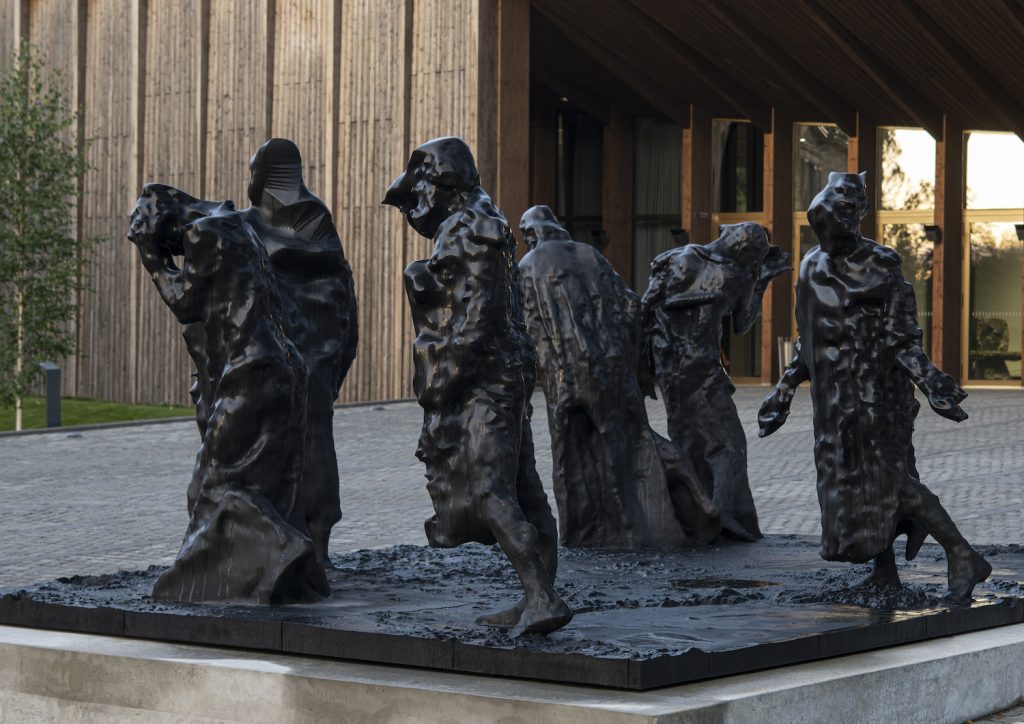
Matthew Day Jackson, Magnificent Desolation (2013)
A monumental bronze sculpture by American artist Matthew Day Jackson (b. 1974) adorns the front of the museum. The work is based on Auguste Rodin’s (1840–1917) public sculpture The Burghers of Calais (1889), which commemorates the Hundred Years’ War between England and France, more precisely the Siege of Calais in 1347.
According to the story, six leading burghers of the French city wanted to sacrifice their lives to the king of England to save the inhabitants. However, the superstitious queen managed to pardon the men for fear of bad luck for her offspring.
Jackson photographed Rodin’s sculpture with a low-resolution camera and modelled the shape based on the images. The figures are placed at the Apollo 11 spacecraft’s landing site on the moon. The original title, Magnificent Desolation, comes from the words of Apollo missionary Buzz Aldrin describing his impression of the lunar surface.
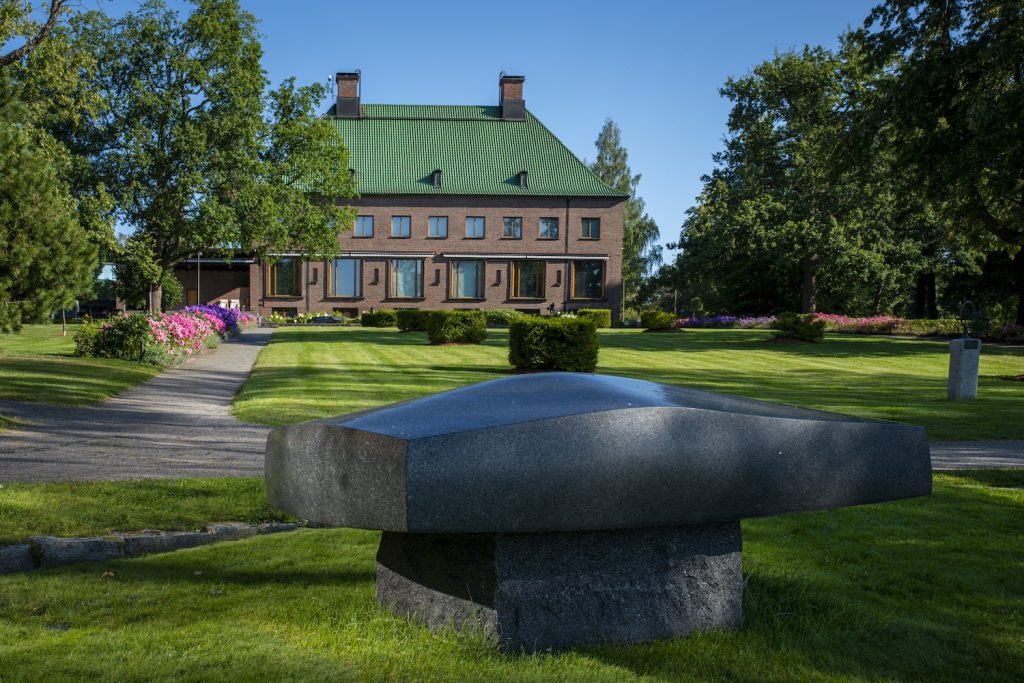
Harry Kivijärvi, Calder – In Memoriam
The sculpture park contains a total of eight sculptures by sculptor Harry Kivijärvi (1931–2010). They all represent forms characteristic of Kivijärvi: non-representational and carved in black stone with carefully shaped surface alternating between smoothly polished and those left rough.
The work Calder – In Memoriam is dedicated to Alexander Calder, who invented the mobile, a moving sculpture. Surprisingly, the centre of gravity of the flat slab resting horizontally on the base stone is not in the centre.
Moreover, several works by Harry Kivijärvi can be found in the park due to the significant donation given by the Kivijärvi heirs in 2012. Collection Harry Kivijärvi includes 24 sculptures and the artist’s own collection as well as some additional acquisitions made by the foundation.
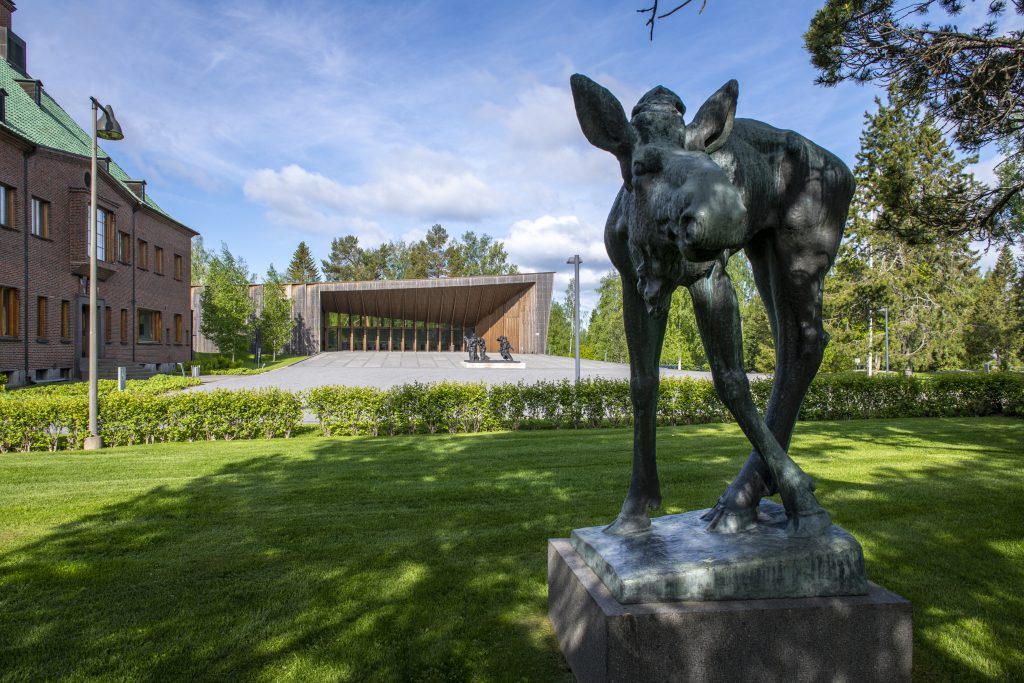
Jussi Mäntynen, The Elk
The sculptor Jussi Mäntynen (1886–1978) was an unparalleled depictor of the animal world. Gösta Serlachius acquired the work The Elk, (The Young Elk) in 1936 to decorate the front yard of his representative home, completed a year earlier.
The collaboration with the artist, which had begun a couple of years earlier, brought many beloved animal figures to Mänttä, such as the lynxes adorning the main entrance of the Serlachius company’s head office.
The Elk appears to be a representation of a female calf as it has no horn buds. The expressive sculpture seems to look curiously at museum visitors.
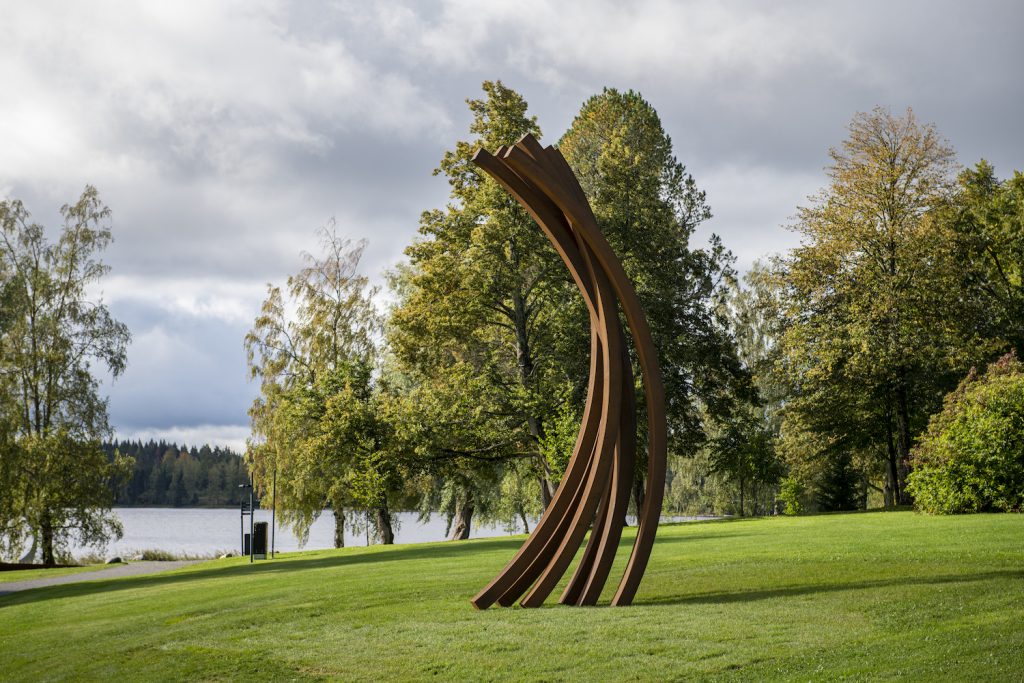
Bernar Venet, 88.5° Arc x 7
The 88.5° Arc x 7 sculpture by internationally acclaimed French sculptor Bernar Venet (b. 1941) stands on the road leading to the manor. Its corten steel arches rise to a height of six meters.
The art piece is part of the series Vertical Arcs in which the artist has taken a line as his starting point. The series comprises arches from around the world, including 60-metre arches in Belgium, 27-metre arches in New Zealand and 22-metre arches in Bonn, Germany.
Since the 1960s and 70s, Bernar Venet has been considered a pioneer of minimalistic, conceptual sculpture. He is known for his dynamic steel sculptures, in which he plays with gravity and three-dimensionality.
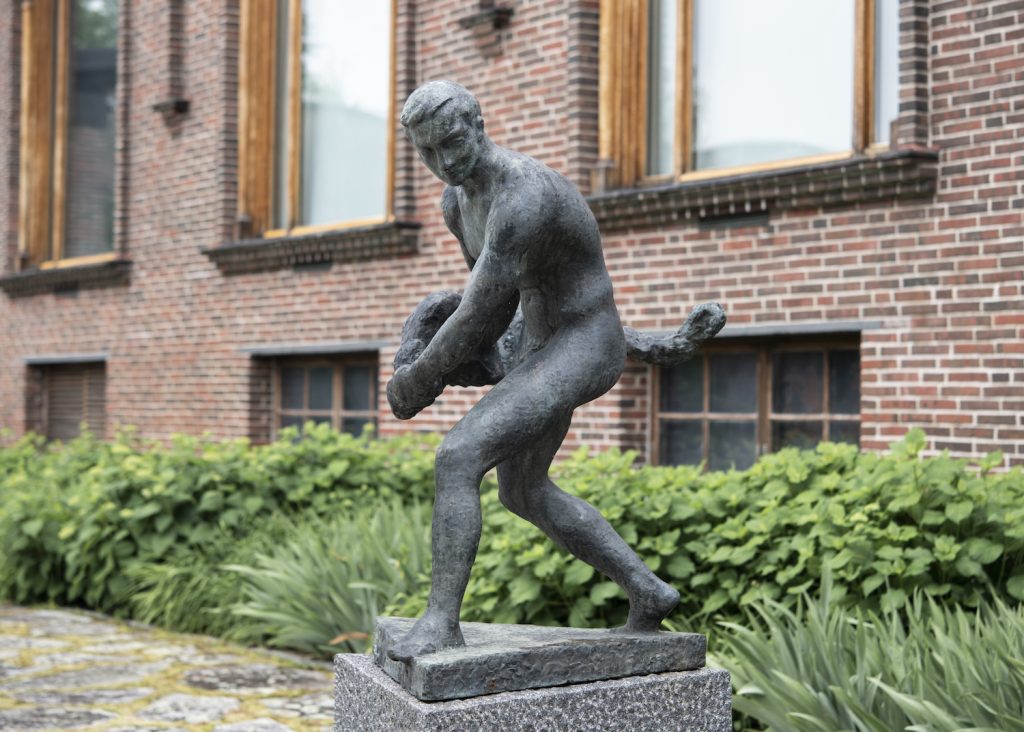
Wäinö Aaltonen, A Youth Playing
A renowned sculptor of the era of Finnish independency, Wäinö Aaltonen (1894–1966) has sculpted many beloved public sculptures, such as the figures of the Hämeensilta bridge in Tampere. Aaltonen’s art dominated public space from the 1920s to the late 1950s. Sculpture helped build a strong visual foundation for the young state.
Aaltonen’s sculptures are characterised by the rigidity of the figures. A Youth Playing in Gösta Park represents determined movement. Nudity exudes admiration for antiquity.

Antero Toikka, Equinox
Sculptor Antero Toikka’s (b. 1954) work Equinox adorns the shore of Lake Melasjärvi. Its grey-painted steel shapes cast interesting shadows.
The work refers to the Spring and Autumn Equinox when day and night are of equal length in the southern and northern hemispheres. The sculpture recounts the dimensions of the Earth: the relationship between the Equator, Tropics and the Antarctic and Arctic Circle.
See the sculptures and their descriptions on the map
You may also acquaint yourself with the works from Serlachius Manor Sculpture Park in a mobile app. Click the attached map of the sculpture park or the link below to enter the sculpture despriotions.

